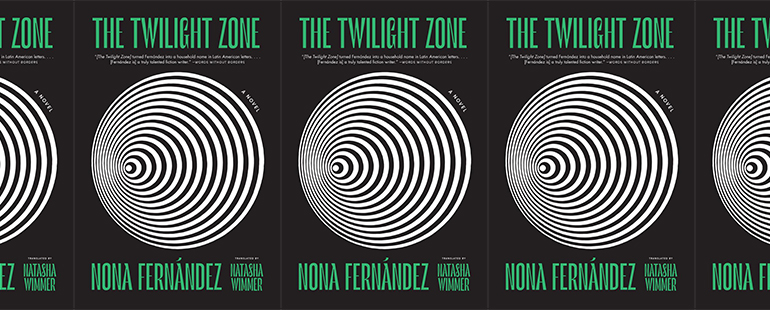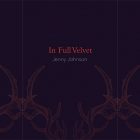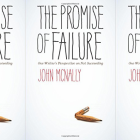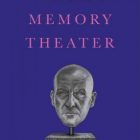The Twilight Zone by Nona Fernandez

The Twilight Zone
Nona Fernandez
Graywolf Press | March 16, 2021
The unnamed narrator of Nona Fernandez’s The Twilight Zone, published in the original Spanish in 2016 and out in translation today by Natasha Wimmer, struggles and is consumed by how her memories from a childhood lived under a dictatorship change as she ages and gains new perspective. This change complicates the narrator’s relationship to the past; as time goes on, she is forced to balance how she understood the dictatorship as a child with how she remembers it now, in her adulthood. The Twilight Zone explores these two different narratives, showing how they are affected by what both the media and society choose to remember.
The struggle in reconciling evolving interpretations of memory is epitomized through the narrator’s recollections of Andres Antonio Valenzuela Morales, or “The Man Who Tortured People.” In 1984, when the narrator is 13, Morales enters a newsroom, requests to see a reporter, and confesses to actions he undertook while a member of Chile’s Pinochet military dictatorship, which include him capturing, torturing, and killing people, and then fleeing to Buenos Aires. As a child, the narrator is terrified of Morales and pictures him as one of the villains she’s read in books, “a man beset by ghosts, by the smell of death.” When the narrator meets him decades later when working on a TV show (Morales is being interviewed for the show for a character based on him), however, she says, “Twenty-five years later my hazy map was gradually coming into focus.” Upon coming face to face with Morales, confronted with her past memories of him and re-entering the zone of her childhood, the narrator thinks:
I became convinced that every bit of information delivered by the man who tortured people had been put out there not just to shock readers and open their eyes to the nightmare, but also to halt the machinery of evil. It was clear and concrete proof, a message from the other side of the looking glass, genuine and incontrovertible, demonstrating that the whole of the parallel and invisible universe was real, not some fantastic invention, as was often said.
For the narrator, this dark zone of her childhood, or as she calls it, The Twilight Zone, is a locked door behind which she had assumed her childhood memories and the traumas of coming of age under a dictatorship were ensconced, hidden away forever. But now, they are out in the light. She realizes she has developed a new relationship to her memory of Morales and his confession, seeing how it made an invisible world visible. Echoing and emphasizing this reconsideration of the past, Fernandez repeats certain phrases throughout her writing, often referring to the title of the book and specific episodes of the popular television show of the same name, as a way to delve into the fluctuations of memory and to acknowledge the items and thoughts that remain while others slip away, while also highlighting the media and society’s role in what we remember.
The narrator continues to questions what is true from her memory of her childhood under the dictatorship, during which people and friends disappeared and were later found to have been killed or tortured. How will these stories be told years later? the narrator asks. Who will be relegated to the role of villain or hero? “I wonder how we’ll tell ourselves the story of our times. Who we’ll leave out of the Nice Zones in the story. Who we’ll entrust with control and curatorship.” Fernandez focuses on who tells the history of an era, and how they determine who is good and who is evil. Often, the line between these two sides is blurred. While attending the opening of the Museum of Memory and Human Rights with her son, which looks back at atrocities in the region, the narrator says, “the person responsible for everything he had just seen in the museum was one of the men who made the laws that governed the country.”
Beyond its presence on a societal level, the history of these years of depravity is felt on a personal level, too. Memories of experiences are loaded with emotion, and conclusions regarding good and evil, right and wrong, are reached—further distorting memory. This conflict plays out far differently in the home than it does in the public sphere, and such a dichotomy is what Fernandez’s work thrives on. She juxtaposes scenes of typical family life (video games, family dinners, walking to school, etc.) and depictions of explicit cruelty. Blurring these two worlds, Fernandez argues that evil isn’t exclusively the domain of the villains of our stories and lives, and this becomes the underlying note that ties together the last half of the work, as indicated by an aside where the narrator and her partner (referred to only as “M”) converse about Dr. Frankenstein and his monster. The narrator says: “I imagined the white landscape of the Arctic and a half-beast, half-human creature wandering the emptiness, condemned to loneliness and a smell he’ll never shed because it’s a part of him. The monster repented, I insisted. That’s why he hides away in the Arctic. Doesn’t that mean something?”
Earlier in the novel, this metaphor is introduced obliquely when Morales is fleeing the country. The narrator imagines him on a crowded bus, watching snow fall on the landscape going by. Maybe Morales has never seen snow, that he “might feel the childish surprise of someone seeing snow or the sea for the first time.” This obsession with the normalcy that exists in even the worst of people’s lives, of going home to children, of hanging lights up at Christmas, of seeing snow for the first time, keeps the narrator from ever truly condemning Morales to any of the zones of history.
Fernandez’s novel works like an episode of The Twilight Zone. The dark connections to be made between past and present, friend and foe, evildoer and hero, are only readily apparent after emerging from the hazy world the reader has been immersed in.



